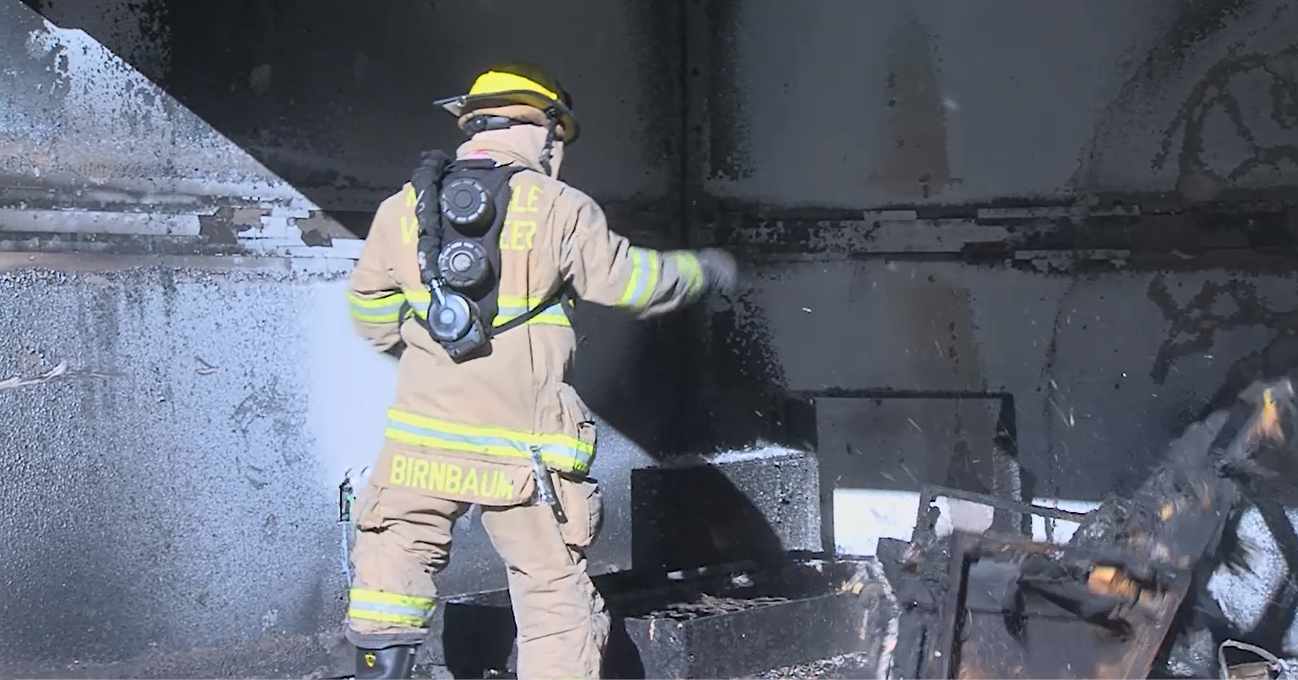
After fighting a structural fire, fire fighters must perform strenuous operations to check for and extinguish any smoldering hot spots behind the walls, and in the ceilings to prevent anything combustible that may cause a fire to reignite. This process is called overhaul.
Until the carbon monoxide drops to safe levels, firefighters will continue to wear their self-contained breathing apparatus (SCBA), weighing up to 25.5 pounds when the air tank is at full capacity, during overhaul operations. Firefighters then take their SCBAs off to continue operations; potentially exposing themselves to other harmful chemicals in the overhaul environment.
To help give responders more room to breathe, the Department of Homeland Security (DHS) Science and Technology Directorate(S&T) collaborated with TDA Research Inc. and Avon Protection Systems on a low-maintenance filtration system that drastically improves responders’ ability to get the job done without placing themselves in harm’s way.
“First responders were looking for a system that would be lighter and more comfortable to wear than their current SCBAs, and so they wouldn’t have to keep leaving every 30 to 45 minutes to get their tanks refilled,” explained DHS S&T Program Manager Bill Deso. “We developed a stackable, modular-filter system that was specially designed to remove the products of combustion for structural fires.” The system can be used in three different variations: a single air purifying respirator (APR) that relies on lung power; single filtered powered air purifying respirator (PAPR) and a two filtered PAPR.
The Respiration Protection for Overhaul technologies were designed to be low-maintenance with washable particulate filter modules. The washable particulate filter module is capable of removing very fine particulates that can be present during overhaul operations. It also has a charcoal filter module optimized for removing toxic chemical vapors present in the fire overhaul environment. Overall, the technology will be more affordable for smaller fire departments and other agencies with limited budgets as the filter canister conforms to the standards used with existing masks and respirators.
S&T’s National Urban Security Technology Laboratory (NUSTL) designed and led an operational field assessment (OFA) focusing on the comfort, usability, and breathing resistance of the prototype filter module in each of the three system configurations.
“The OFA included seven activities that provided first responder evaluators an opportunity to experience the various systems under realistic operational scenarios, including stair and ladder climbs and working in a pre-burned burn room using tools to probe for fire and sift through debris for evidence gathering,” explained NUSTL Test Director Brian Albert. “After each activity, the evaluators were debriefed by a NUSTL data collector to share activity- and equipment-specific comments. Once they completed all of the operational scenarios, they provided feedback on their overall impressions of each system.”
The Respiration Protection for Overhaul Operational Field Assessment Report is posted to the S&T website and available now.
“Currently we wear full bunker gear and a SCBA to protect our airway and our skin during overhaul,” said Lori Brill, Assistant Fire Chief with the Golden Gate (CO) Fire Protection District. “However, the main disadvantage of that is its heavy, and after we’ve worked putting the fire out for an hour to two hours, we then need to go in and do overhaul which is taxing on our already exhausted bodies. The equipment we tested was lighter weight and more comfortable than a bulky SCBA which will help firefighters perform overhaul operations while also protecting their airways.”
Brill was one of six fire service first responder evaluators who participated in the OFA of the APR and PAPR Respiration Protection for Overhaul technologies at the National Fire Academy in Emmitsburg, Maryland. During the assessment, the technologies were put through various tests.
The majority of evaluators who participated in the OFA believed that each system configuration was an improvement over the much heavier and more cumbersome SCBA. They provided feedback on the most appropriate use-cases for each system and offered some suggestions for improvement. Overall, the evaluators found that the various filter module configurations provided enough comfort, maneuverability, and ease of breathing to provide valid alternative options for firefighters performing overhaul work. By eliminating the bulky and heavy SCBA tank, these systems have the potential to make overhaul work easier and faster, while also preventing injuries due to strain and exhaustion.
“As a fire investigator, I go in after the fire to determine the origin and cause of the fire. The overhaul hazard for investigators happen during debris removal which stirs up fireground particulates,” explained Lieutenant Salman Khan, a Fire Investigator in the Fairfax County (Virginia) Fire Marshalls Branch. “As an investigator, my face and my hands are in very close contact with those particulates. The systems we tested will not only provide much needed respiration protection, but they are lighter weight and put less strain on our back allowing us to do our job tasks in a more thorough and methodical way; versus the added stress from the heavier SCBA.”

